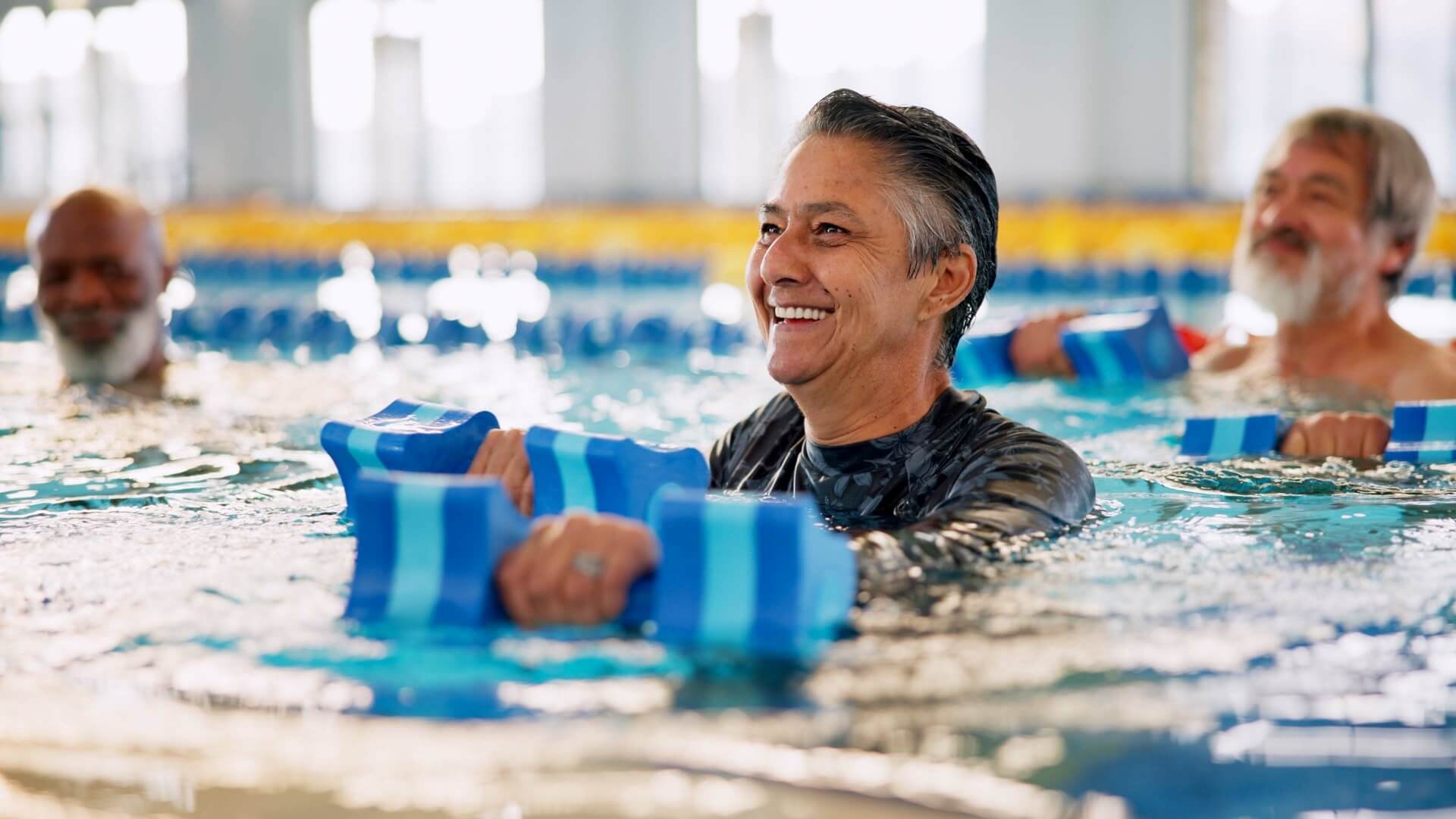September 26, 2025
Exercise Recommendations for Managing Parkinson’s Disease
Living with Parkinson’s disease presents unique challenges that affect movement, balance, and daily activities. While this progressive neurological condition can feel overwhelming, research consistently shows that structured exercise plays a crucial role in managing symptoms and maintaining quality of life.
Exercise isn’t just beneficial for people with Parkinson’s disease — it’s essential. Regular physical activity can slow symptom progression, improve motor function, and enhance overall well-being. The good news is that with the right approach, you can develop an exercise routine that works for your specific needs and abilities.
This guide provides practical exercise recommendations specifically designed for individuals with early-onset Parkinson’s disease. You’ll discover which types of activities offer the greatest benefits, how to create a safe and effective routine, and ways to stay motivated on your fitness journey. After you’re done exercising, the therapeutic devices from Gladiator Therapeutics can help enhance the benefits of exercise on your condition.
Understanding Parkinson’s Disease and Movement
Parkinson’s disease affects the brain’s ability to produce dopamine, a neurotransmitter essential for smooth, controlled movements. This deficiency leads to the hallmark symptoms: tremors, muscle stiffness, slow movement (bradykinesia), and balance problems.
The condition primarily impacts motor skills, making everyday activities like walking, writing, or getting dressed more challenging. Balance and coordination become compromised, increasing the risk of falls. Muscle rigidity can cause pain and limit the range of motion.
However, exercise can help counteract many of these effects. Physical activity stimulates the production of brain-derived neurotrophic factor (BDNF), which supports nerve cell health and may help protect remaining dopamine-producing neurons.
The Power of Exercise for Parkinson’s Disease
Regular exercise offers multiple benefits for people managing Parkinson’s disease:
- Improved Motor Function: Exercise helps maintain and improve muscle control, making movements smoother and more coordinated. Activities that focus on large, amplitude movements can help combat the tendency toward smaller, shuffling steps.
- Enhanced Balance and Coordination: Balance training reduces the risk of falls by strengthening the muscles and neural pathways responsible for maintaining stability. This is particularly important since falls are a major concern for people with Parkinson’s.
- Increased Strength and Endurance: Strength training helps combat muscle weakness and fatigue, two common symptoms that can worsen over time. Building physical stamina improves your ability to perform daily activities.
- Better Mood and Cognitive Function: Exercise releases endorphins, which naturally improve mood and can help combat depression and anxiety, often associated with Parkinson’s. Physical activity also supports cognitive health and may help with attention and memory.
- Enhanced Quality of Life: Regular exercise promotes independence, confidence, and overall well-being. Many people find that staying active helps them feel more in control of their condition.
Types of Exercise That Make a Difference
Different types of exercise address various aspects of Parkinson’s disease symptoms:
1. Aerobic Exercise
Aerobic activities get your heart pumping and improve cardiovascular health. Options include:
- Walking: Start with short distances and gradually increase
- Swimming: Low-impact option that’s easier on joints
- Cycling: Stationary or regular bikes can improve leg strength and coordination
- Dancing: Combines aerobic exercise with rhythm and coordination training
2. Strength Training
Building muscle strength helps maintain function and independence:
- Resistance bands: Portable and adjustable for different fitness levels
- Light weights: Start with 1-2 pounds and progress gradually
- Bodyweight exercises: Push-ups, squats, and lunges using your own body weight
3. Balance and Coordination Exercises
These activities specifically target stability and fall prevention:
- Tai chi: Slow, flowing movements that improve balance and flexibility
- Yoga: Combines strength, flexibility, and balance training
- Pilates: Focuses on core strength and controlled movements
4. Stretching and Flexibility
Regular stretching helps maintain range of motion and reduces stiffness:
- Dynamic stretching: Moving stretches before exercise
- Static stretching: Holding stretches for 15-30 seconds after exercise
- Range of motion exercises: Specific movements for joints affected by rigidity
Gladiator Therapeutics: Advanced Support for Parkinson’s Management
While exercise forms the foundation of Parkinson’s disease management, innovative therapeutic approaches can provide additional support. Gladiator Therapeutics is committed to providing effective treatment options for those living with Parkinson’s disease.
Our SemiCera® Technology, originally developed for wound healing, offers unique therapeutic benefits that may complement traditional Parkinson’s treatments. This technology provides:
- Stimulation of healing processes: Supporting cellular repair and regeneration
- Improved mitochondrial function: Enhancing energy production at the cellular level
- Enhanced blood flow and oxygenation: Improving circulation to affected areas
- Anti-inflammatory effects: Reducing inflammation that may contribute to symptom progression
- Reduction of oxidative stress: Protecting cells from damage
These properties suggest potential benefits for Parkinson’s disease treatment by addressing some of the underlying cellular mechanisms involved in the condition.
Take Action for Your Health
Exercise remains one of the most powerful tools for managing Parkinson’s disease symptoms and maintaining quality of life. With appropriate exercise recommendations and consistent effort, you can slow the progression of symptoms, improve daily function, and maintain an active and fulfilling lifestyle.
Remember that managing Parkinson’s disease is a team effort. Work closely with your healthcare providers, consider innovative therapeutic options, and don’t hesitate to seek support when you need it.
Ready to explore additional treatment options? Contact Gladiator Therapeutics today to learn more about how our groundbreaking devices can help you manage the symptoms of Parkinson’s disease. Our team is here to provide information about innovative approaches that may complement your current treatment plan and exercise routine.

